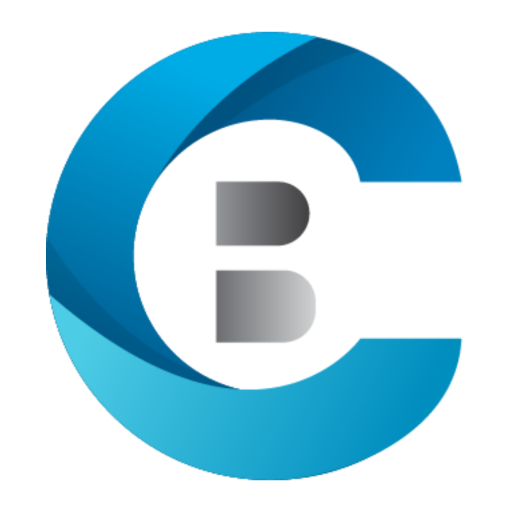Why Collaborative Learning is the Next Stage of LMS eLearning
In 2015, industry analyst Josh Bersin concentrated on the Net Advertiser Score of L&D in general, and it was under nothing.
Organizations were putting billions of dollars into learning stages even though the projects had a bigger number of doubters than champions. Most workers weren’t in any event, utilizing them.
Learning management systems were excessively awkward, courses were excessively dull, and none of it addressed genuine representatives’ issues.
This breakdown is an enormous issue for L&D offices. It’s sufficient not to put resources into an LMS and trust that workers use it.
To legitimize their reality, they need to make training programs with genuine, quantifiable returns for the money invested. Furthermore, to do that, they need a learning stage that assists workers with mastering helpful professional abilities.
To comprehend how we got into this quandary, you want to know why most customary LMSs and LXPs can’t take care of business.
From that point, it’s not difficult to see where LMS eLearning needs to go straight away. A Collaborative Learning stage is the legitimate following stage in the LMS development because, not at all like its numerous ancestors, it allows workers to learn together inside the setting of their particular organization and profession way.
Customary LMS is inventive yet innately imperfect
Throughout recent years, Learning management systems have taken gigantic innovative steps. In any case, numerous heritage frameworks battle to draw in students as a result of these disastrous defects at their center: a hierarchical learning structure, costly course creation, and poor UX.
The cutting-edge LMS as far as we might be concerned first came to fruition in the last part of the 1990s. These early frameworks were intended for the scholarly community, yet they were worked to tackle a general question: how could innovation help disseminate learning? Learning management systems were considered offbeat web-based realizing, which was perfect, yet they were quite sluggish and challenging to utilize.
With the ascent of the Internet, the corporate world started to take on LMS innovation for worker training. In the mid-2000s, completely online corporate learning stages like ePath learning showed up on the scene. Afterward, most frameworks moved to the cloud, which considered completely circulated learning and constant updates. Over the long haul, LMSs turned out to be quicker and better looking, with more easy-to-understand configuration highlights.
Even though we’ve progressed significantly from the early sluggish dinosaurs of LMS history, numerous LMSs miss the mark concerning their commitment to assisting representatives with learning.
The central issue is that practically all LMSs center principally around executives, not students.
The basic role of an LMS is to assist L&D divisions with overseeing learning content. Administrators can transfer courses, inventory them, and oversee fruition rates and worker consistency. This is all significant, however, it does very little for workers with a consuming inquiry or a longing to get familiar with another expertise.
Course creation is a costly and laborious cycle including proficient informative fashioners or IT help. Many depend intensely on costly, imported, SCORM-consistent courses bought from off-the-rack content suppliers. Content is static, challenging to refresh, and tedious to create.
An administrator-focused stage and grave substance creation process prompted an imbued, hierarchical way to deal with LMS eLearning, where L&D directs what representatives need to realize, with tedious Training needs examination and abilities hole investigation, and workers have barely any choice however to go along. Little belief was given to the student’s insight or inclinations.
That is until LXPs show up on the scene.
LXPs led to a superior client experience
A more prominent accentuation on client experience and independent learning has prompted the expanded ubiquity of coordinated or committed opportunity for growth (LXP) programming in a couple of years. LXPs are a gigantic market at present, ready to supplant conventional LMS programming. The pattern towards better client experience and support is a positive development yet misses the mark concerning conveying the particular, directed learning and cooperation that workers need.
LXPs have emerged in direct reaction to our analysis of LMSs over that they aren’t individuals driven. With a web brimming with free satisfaction, workers are bound to look into how to do something on YouTube than mess around on an LMS. L&D required a learning arrangement that would tempt students.
While LMSs work with content administration, LXPs are unequivocally intended to be content conveyance frameworks. They let L&D pioneers surface courses and content for pertinent workers, make learning ways, and gather examinations on client conduct.
The facts confirm that LXPs have a vastly improved interface than numerous LMSs; some are extremely lovely. Large numbers of them design themselves after Netflix or YouTube by permitting workers to peruse content and take courses for their recreation. They look exceptionally cool, yet tragically, they aren’t viable.
The greatest imperfection of LXPs is that they aren’t Collaborative. L&D is still accountable for making or giving learning content. Workers later consume it single-handedly on their PCs. As groups advance toward additional correspondence and Collaborative work, for what reason would we say we are as yet advancing without anyone else?
This detachment and the normally self-serve nature of LXP content add to risky data storehouses. Workers are more occupied than at any other time and lack the opportunity and willpower to squander perusing around an LXP with expectations of staggering on valuable substance. More regrettably, representatives aren’t sharing data, which prompts the deficiency of important institutional information.
To break out of this delineated learning cycle, we want to change how we view the educational experience. We want an upset.
Collaborative Learning democratizes information
LMS and LXP are both significant devices for worker training, however, they don’t go sufficiently far. Despite mechanical upgrades, both still take special care of an obsolete, hierarchical way to deal with learning and the executives. Be that as it may, here is the remedy: Collaborative Learning.
A Collaborative Learning stage is an incorporated learning arrangement that upgrades the opportunity for growth throughout the whole organization. Rather than L&D making and conveying content, everybody will assume a part by proposing, adding to, and taking courses.
The following are three significant justifications for why Collaborative Learning is more successful than anything before it.
Collaborative Learning is quick, agile, and lean
Organizations are changing, and innovation is advancing quicker than at any other time as we manage gigantic world occasions like Coronavirus and significant working environment patterns like computerized change.
A Collaborative Learning stage permits you to distribute and emphasize new courses rapidly so workers can stay aware of these changes.
In a Collaborative framework, the job of L&D shifts from the agent to the facilitator. Representatives can surface advancing requirements when they come up, making training needs investigation a ceaseless interaction, rather than something L&D plunks down and computes each quarter. L&D can utilize that saved opportunity to zero in on filling that information and abilities holes.
You can utilize your Collaborative Learning stage to make content in-house. You’ll set aside cash by avoiding the conventional, mass-market courses for more circumstance-explicit substance.
Simpler course creation allows you rapidly to assemble casual courses that feature transitory work process changes or fast convention shifts. You can refresh learning materials immediately founded on new data or representative input. Accordingly, satisfaction is more affordable than customary LMS course creation and more exact.
Collaborative Learning is peer-driven
In the present economy, your representatives are your most noteworthy cutthroat asset. Their ability, mastery, and abilities are fundamental to the outcome of the organization. A Collaborative Learning stage allows you to saddle and intensify that asset by allowing them the opportunity to educate and gain from each other.
Odds are good that you just recruit skilled individuals. Get the most mileage from all their in-house abilities and gifts by utilizing your workers to make seminars on their subject matters. Your substance will be more organization and group explicit than nonexclusive bought content. It’s an incredible method for thumping down data storehouses and spreading the information abundance around.
As well as being a good idea for your main concern, there are numerous mental and logical advantages to Collaborative learning. It increments information maintenance, prompts better worker commitment, and upgrades work environment correspondence. You’re constructing a more grounded, more brilliant group.
Collaborative Learning is decentralized
Not at all like conventional hierarchical LMSs, Collaborative Learning stages work with a base-up process where everybody can add to building learning content. This approach makes them a magnificent fit for some associations that are now moving away from hierarchical administration styles toward more libertarian group-based work. We’re looking at Collaborative Advancing as well as Collaborative initiative.
Collaborative Learning isn’t simply a learning method; it’s an upgrade of the whole learning order.
Rather than pushing information on workers, as in an extremist hierarchical methodology, organizations focused on Collaborative Learning make everybody in the organization a piece of the growing experience.
Anybody can surface a learning need or contribute their insight to a course — bringing about a granular perspective that is juster.
What’s unimaginable about this democratized framework is that it diminishes information storehouses and opens up data to everybody in the organization. Everybody currently has similar assets which opens doors for progress. This is critical to scaling learning and development.
We’re entering a brilliant period of LMS eLearning
Notwithstanding long stretches of insufficient frameworks and squandered cash, what’s in store is currently looking truly brilliant for LMS eLearning.
We’re entering Collaborative Learning unrest that will thoroughly change how we put together and circulate information inside associations. This will have sweeping repercussions past the L&D office. Collaborative Learning assists organizations with adjusting to disturbances in their industry quicker than at any time in recent memory.
In any case, to do this, you’ll require the right devices. A customary LMS and LXP may be important for the arrangement, yet they alone will not get you there. A Collaborative Learning stage like Bytecasting LMS, either instead of or notwithstanding a customary LMS, can make everything fair and transform your workers into dynamic students.
Click here to know more details
Click here for more Blogs


